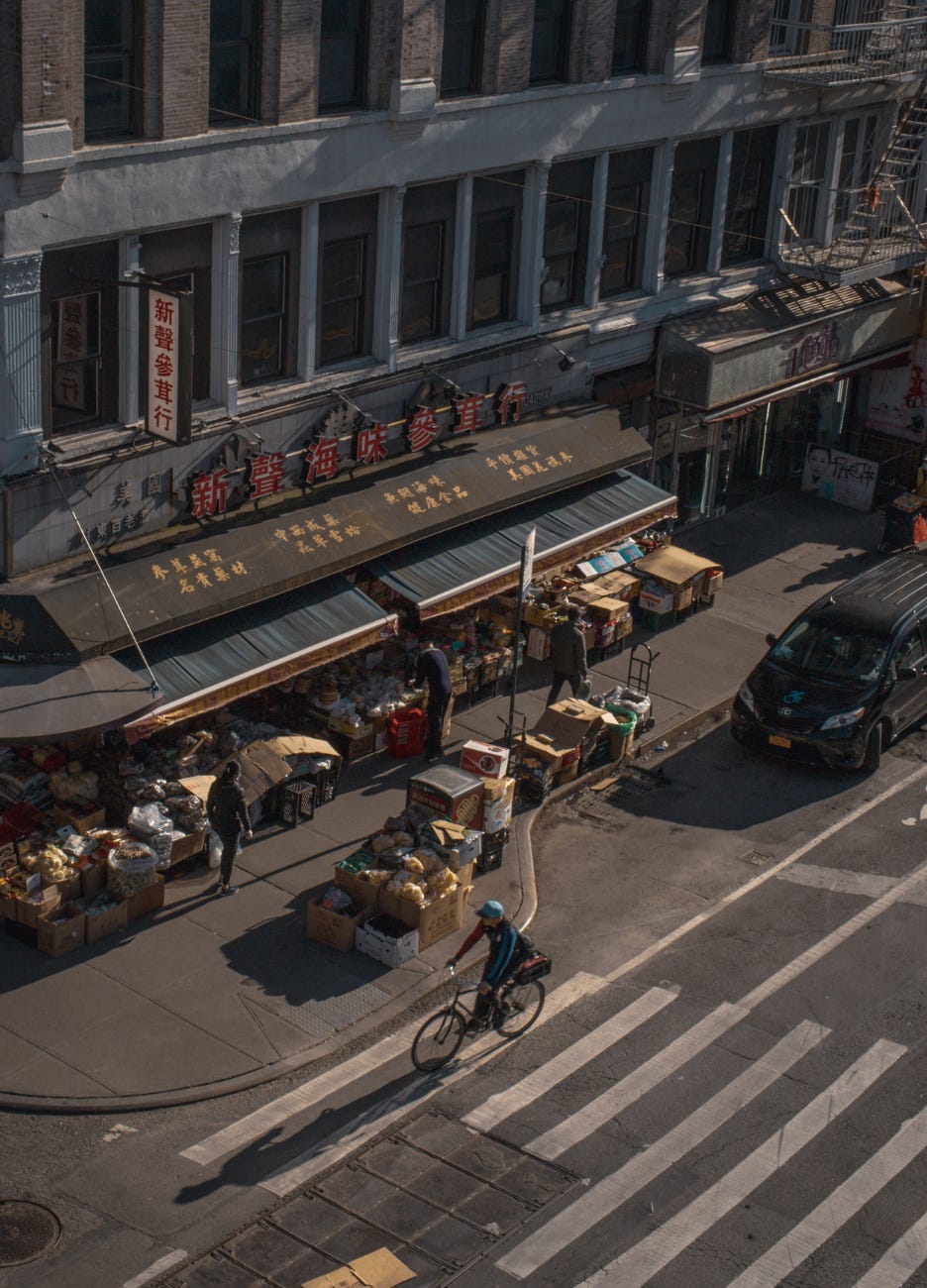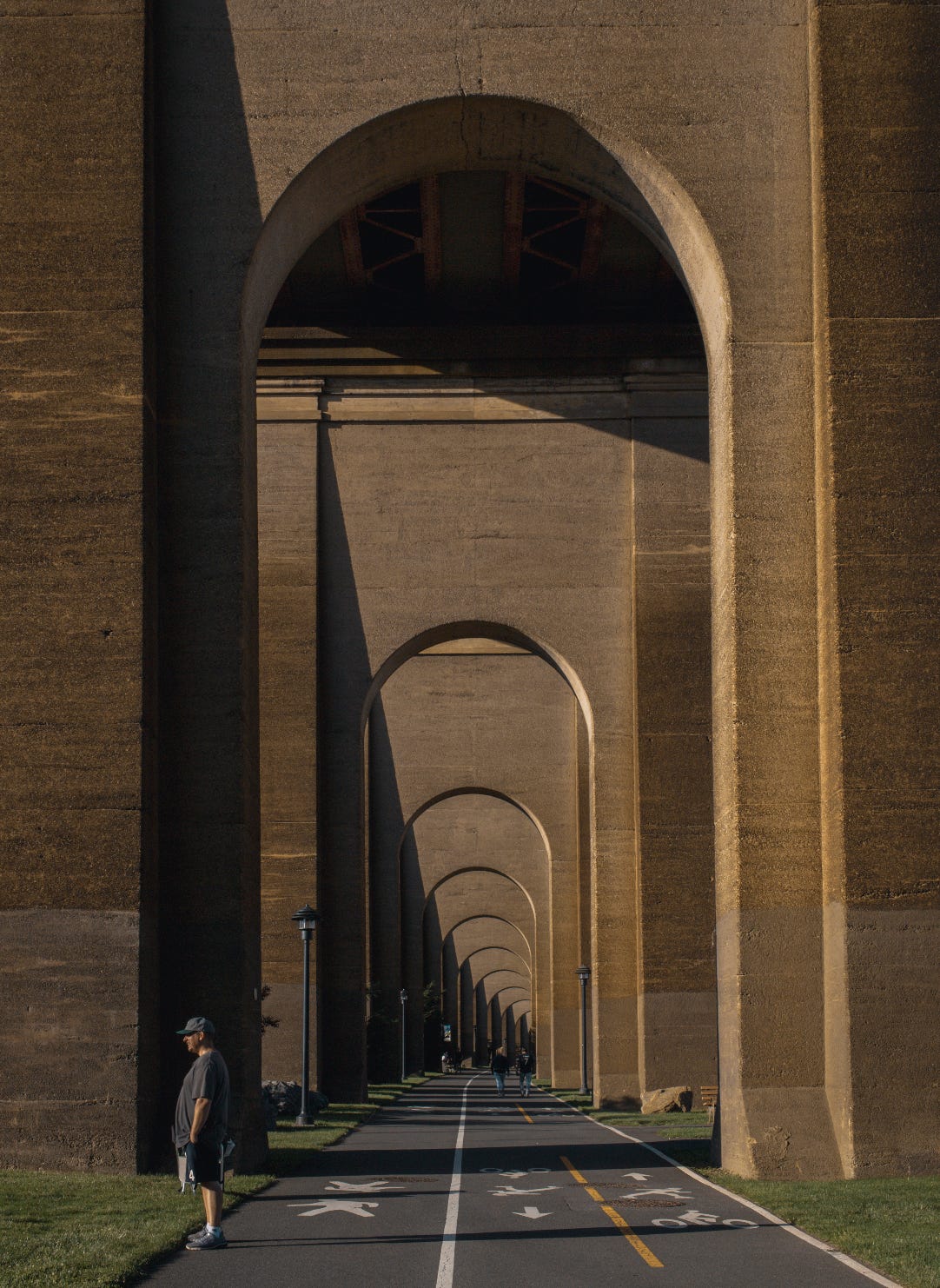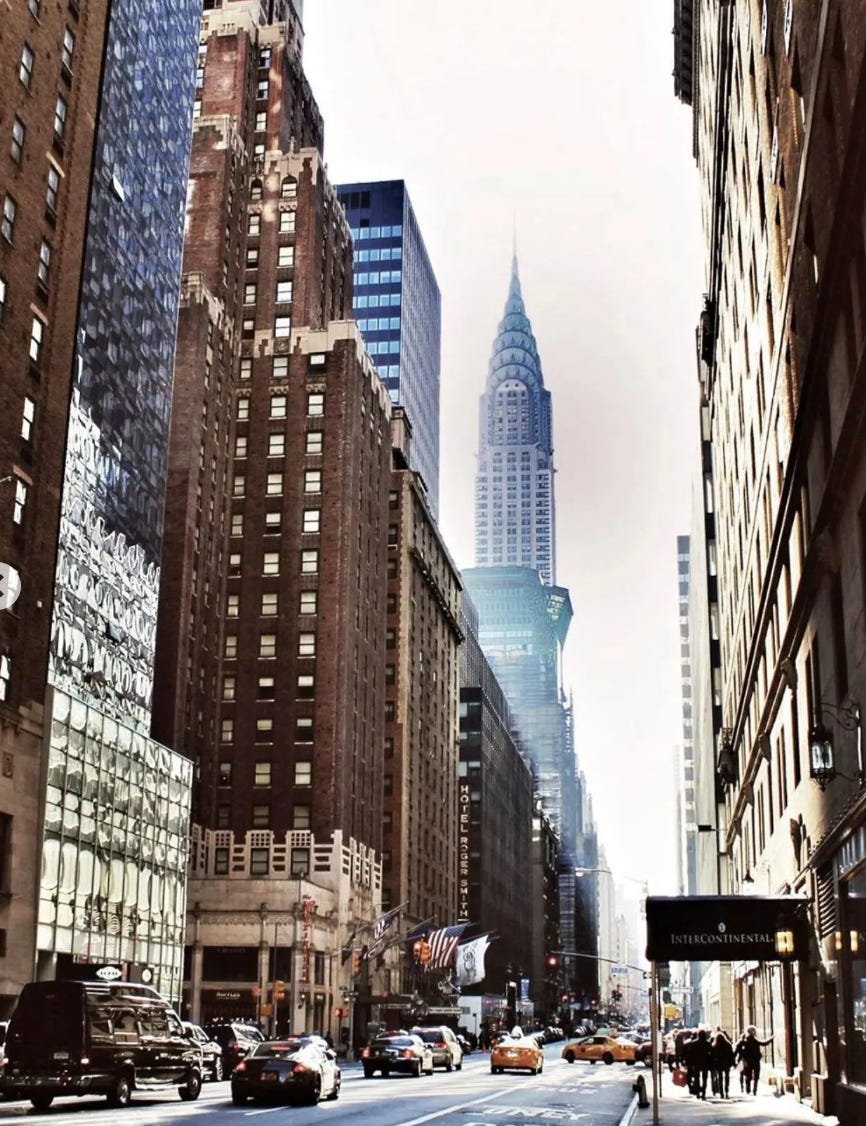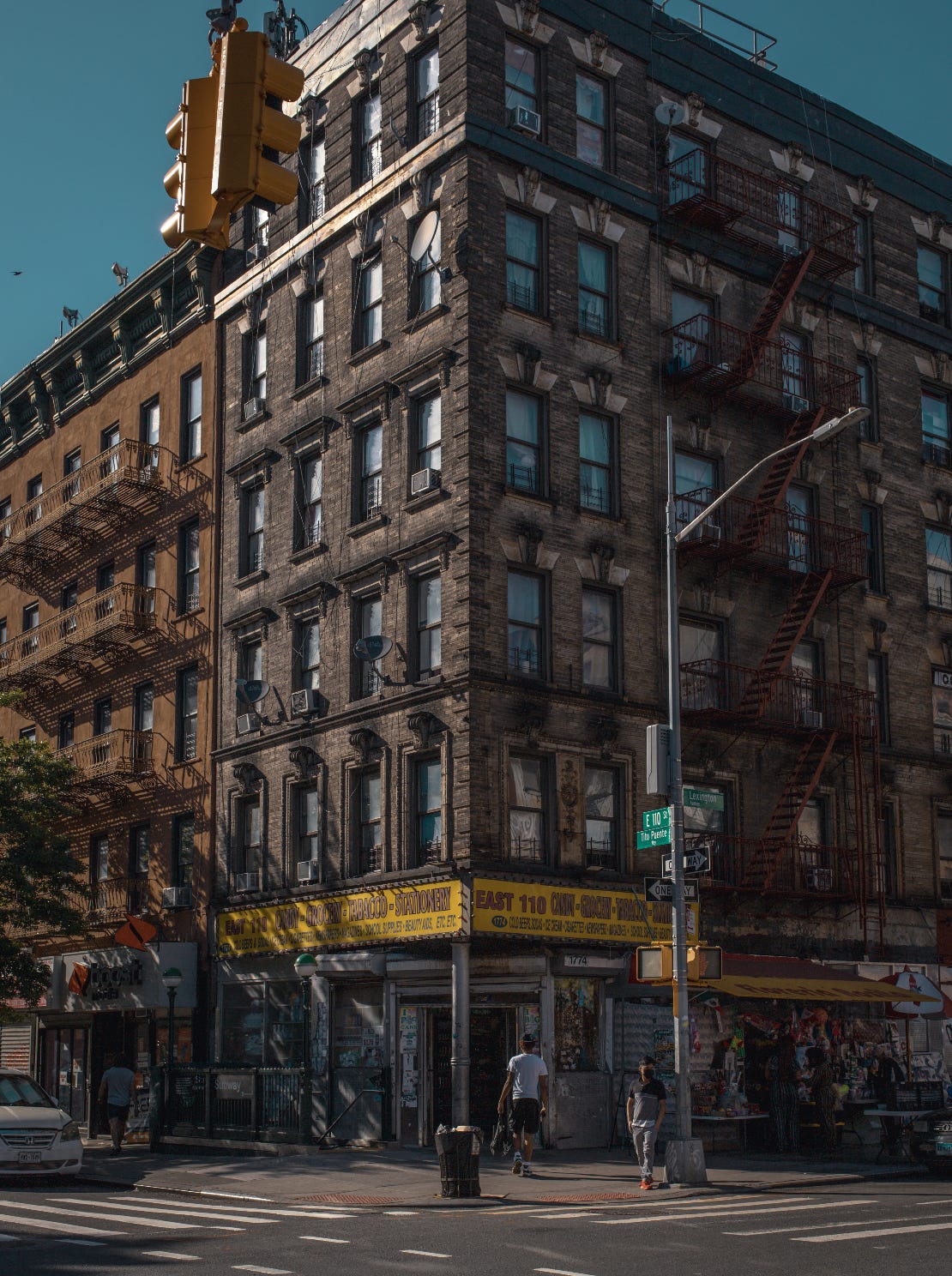My Goodbye to All That
Reflections on leaving New York
When I quit my first job, I wrote my farewell email two months before my last day. I wrote a lot of this goodbye letter to New York before I had any set date for leaving, I just knew I would. “Loving and leaving New York” is about as hackneyed a genre as they come and one I am blithely contributing to. What follows is a pastiche of musings pulled together from journal entries, conversations, and books. I hope you enjoy.
Like most yuppies who move to New York in their early twenties, I’ve always known my time here was temporary. New York has often felt like an indulgence – I could be closer to family, to the countries I work in, and to home. And yet, I have found myself coming back after recurrently long trips abroad.
In Mohsin Hamid’s Reluctant Fundamentalist, the protagonist undertakes a move mirroring mine — from Pakistan (India) and Princeton (Yale) to management consulting in New York. He narrates, “In a subway car, my skin would typically fall in the middle of the color spectrum. On street corners, tourists would ask me for directions. I was, in four and a half years, never an American; I was immediately a New Yorker.” I moved to New York during the depths of the pandemic winter in 2020. Instead of packed subway cars I was met with an eerily quiet Kips Bay, devoid of the frat bros whose ideas of fun were frozen in sophomore year (I moved out soon after their worst instincts returned). My days were marked by making slides for clients who couldn’t quite fathom my humanity beyond my Zoom square and going on long walks along the East River, to Madison Square park, up, down, all around. Looking back, I can call this my “quiet era” of New York. Because I wasn’t meeting many new people, I didn’t make many new friends. I forgot how to be a conversationalist — small talk felt facetious and deep questions were triggering when we were watching the world fall apart. On most days, my oral comprehension was occupied by a one-way stream of podcasts into my ears. The quiet era laid the foundations of my relationship with the City. I resolved to walk every bridge out of Manhattan and go to every park bigger than Central (there are three). I developed a mental map of inspiring places, listened to Bowery Boys to absorb their history, and started to call the City my own by learning to know it deeply.1
During my prior four and a half years in New Haven, my lifestyle had been circumscribed by I-95 or Route 15, which cut off most of my walks. In Delhi, hostile architecture and the summer forced me to experience the city at arms length — across the chassis and climate control of a car. In New York, I need only moderate resolve to walk as far as I’d like.2 The grid is particularly conducive to losing yourself, in yourself or in others. When I amble around with friends, whatever we are talking about—pigeons, Bollywood item numbers, population ethics—feels like the most important thing in the world. When we look up, we may have traversed half the island without notice.
Walkability and transit enable the community I have amassed in New York. Few places are too far or too expensive to get to. We aren’t confined to our apartments and can always meet in the middle. I often joke that I stopped growing in March 2020 – one part of this is the latent trauma of embarking on adulthood during the pandemic. The rest is that I continue to feel like a college student in New York. Our dorms have changed into apartments, dining halls to restaurants, and campus quadrangles to public parks, but the essence of spontaneity and youth remain. And as Joan Didion wrote in Goodbye to All That, the foundational essay of the ‘loving and leaving New York’ genre, “we [still] have all the afternoons in the world.”
I have learnt to engage with the City on my own terms and at my own speed. Most importantly, I have largely been left alone while doing it.3 Didion wrote, “I began to cherish the loneliness of it, the sense that at any given time no one need know where I was or what I was doing.” One of my trivial but recurring anxieties about moving to a college town this fall is the possibility of running into people I know, all the time. All of life is theatre but in big cities I can choose when I want to perform, and in New York I can even choose the play I take part in.
Because I have always known my time in New York would be temporary but I haven’t known when it would end, I’ve romanticised it every waking day. Describing her experience of moving from California in the 60s, Didion wrote:
“You see I was in a curious position in New York: it never occurred to me that I was living a real life there. In my imagination I was always there for just another few months, just until Christmas or Easter or the first warm day in May…Someone who lives always with a plane schedule in the drawer lives on a slightly different calendar.”
New York feels like an indulgence because it is a suspension of reality.4 During the first half of my time here I didn’t quite have the privilege of leaning into that suspension — there was too much happening in the “real world” that needed my attention. When I returned for the second half, with the pandemic waning and existential challenges sorted, I was able to immerse myself in the fantasy. My roots in the city were always fragile and tenuous, and so I could wake up every day with the liberty of being a new person. I could leave for months, come back changed, and see myself have another go at it.
My more rational-minded friends sometimes comment that New York is a self-fulfilling prophecy – there are enough people passing through, all predisposed to romanticisation, that we enable a collective delusion. I am inclined to agree. In Severance, a book set in zombie-apocalypse New York, Ling Ma observed, “I was thinking about how New York is possibly the only place in which most people have already lived, in some sense, in the public imagination, before they ever arrive.” My first ever memory of New York is standing on a curb in Chinatown in the winter of 2012, after my parents and I had gotten off a budget bus from Boston. Before I liked desi chill music I liked alt rock and The Lumineers’ Ho Hey had been the soundtrack to my year. While on that curb I finally understood a lyric I had passively memorized: “I'd be standin' on Canal, and Bowery, she'd be standin' next to me.” At that moment, I was standing on Bowery. During that trip, I also saw the Chrysler Building for the first time and took a photo I cherished for years. Even at the age of thirteen, even after just forty eight hours in the City, I knew I would be back. I had finally fathomed a miracle and had to make it happen.5
Despite this panegyric to the City, I find myself leaving it, and largely voluntarily. When I was seeking out grad schools, I chose not to apply to ones in New York, because I knew that if I was accepted I would be too tempted to stay. At some point I had to accept that this fantasy of my early 20s had to end and contend with facets of the City that have made my three years extraordinary, but could make thirty more consecutive ones a lost opportunity. While describing the urban myopia of some New Yorkers, composer Brian Eno writes:
“I noticed that this very local attitude to space in New York paralleled a similarly limited attitude to time. Everything was exciting, fast, current, and temporary. Enormous buildings came and went, careers rose and crashed in weeks. You rarely got the feeling that anyone had the time to think two years ahead, let alone ten or a hundred. Everyone seemed to be passing through. It was undeniably lively, but the downside was that it seemed selfish, irresponsible and randomly dangerous. I came to think of this as "The Short Now", and this suggested the possibility of its opposite - "The Long Now".”
I have tried to find some of the Long Now–slower, more considered and reflective living–in New York through solitude and walking. However, it is the Shortness of the New York Now that roots many of my memories here. In weeks, I have seen relationships traverse the ebbs and flows one would otherwise expect to cover over years. While I have been thrown in the intellectual and professional deep end in other places, I have discovered a certain solace in knowing that so much of the City indefinitely inhabits the deep end. We are all perpetually flailing, but we are also not drowning.
At the same time, perpetual flailing lends itself to a certain myopia and selfishness, perhaps only fitting for the cradle of capitalism. A sentence I often return to to understand America was written by a journalist during the pandemic: “The United States suffers from a deficit of imagining the lives of other people.” When I am in New York, I oscillate between severe self-absorption and a depressing awareness that as much as I try to make myself believe that this is it, there is no such thing. When I started my job at GiveDirectly, I was working on a project sending ~$50 transfers per month to people in Malawi, sufficient to guarantee subsistence and more. I was also living in New York where $50 is a pittance to spend on a day of leisure. F. Scott Fitzgerald wrote that “the test of a first-rate intelligence is the ability to hold two opposing ideas in mind at the same time and still retain the ability to function.” New York, the city only for the very rich and the very poor, has continuously pushed my ability to keep both in sight.
Sometimes I worry I will end up like one of the Roy’s from Succession, so caught up in the motions that I lose the ability to step back, give up, or start over. As a city for strivers, New York also predisposes itself to keeping its inhabitants on the hedonic treadmill. I have started seeing my friends from elite schools, who a few years ago would’ve scoffed at conspicuous consumption, habitually spending on Equinoxes, platinum credit cards, increasingly luxurious apartments.6 I would be lying if I said I wasn’t tempted. Before moving here, I couldn’t imagine how one could spend tens of thousands of dollars for a relatively normal life. At its worst, elite New York makes me question whether even hundreds of thousands are enough.
I haven’t quite processed that I will be leaving this City in less than a month. A lot of my angst likely comes from the attachment one feels to the first city they move to as an adult. I’ve made my life here and the thought of remaking it elsewhere feels daunting.7 Another part of me feels guilty for liking New York the way I do, as if I am rejecting my other homes, especially Delhi. While this essay had been simmering in my head for weeks, it was the air pollution in New York last week that finally spurred me to write it. Something about the smoggy skies jarred me, and realizing I was jarred further confused me — why did 200 AQI in New York bother me so much when it was daily existence in Delhi? Which one of my cities do I owe my service to? Describing her experience moving to Paris, essayist and born New Yorker Lauren Elkin writes:
“Leaving home does something to your sense of identity. Either you become more of that place than you ever were while you lived there, or your identity calcifies around the rejection of this place. It is challenging to inhabit the space between these two positions.”
I have often said to friends that New York is the only place in America I can see myself living in but I don’t expect to return at the end of grad school. By then, I would’ve spent a decade in America — ten years spent looking at India from afar. In a bittersweet way, I hope leaving New York will make leaving America easier.
“Because a New Yorker interested in the history of New York is by definition a lunatic, going against the tide, swimming or rowing upstream against the press of his fellow citizens, all of whom don’t give a shit about this past stuff.” - New York 2140, Kim Stanley Robinson
New York has helped me conceive of public space and mobility as freedoms critical to development, a la Amartya Sen. New York’s urban landscape and my ability to access most of it as a young, single woman has helped me grow across my health, intellect, and understanding.
Sartre wrote, “Nowhere have I felt freer than in the midst of its crowds…Here you may suffer the anguish of loneliness, but not that of crushing defeat.
My roommates and I joke that New York is a “main character” city. Is there any feeling of self-importance more pure than walking around Midtown as a 21-year-old in business casuals? Over the last month, I’ve watched Succession and Across the Spider-Verse, both excellent stories of power, salvation, and deceit, both set in New York. It’s hard not to feel self-important when your daily commute features in the biggest cultural moments of the summer.
For people from far outside the suburbs of Long Island and Westchester, Didion writes about the inability to fathom New York, “…Wall Street and Fifth Avenue and Madison Avenue were not places at all but abstractions…New York was no mere city. It was instead an infinitely romantic notion, the mysterious nexus of all love and money and power, the shining and perishable dream itself. To think of ‘living’ there was to reduce the miraculous to the mundane; one does not “live” at Xanadu.”
“In the past year, Jonathan had become increasingly disillusioned with living in New York. Something along the lines of: the city, New York fucking City, tedious and boring, its charms as illusory as its facade of authenticity. Its lines were too long. Everything was a status symbol and everything cost too much. There were so many on-trend consumers, standing in lines for blocks to experience a fad dessert, gimmicky art exhibits, a new retail concept store. We were all making such inspired lifestyle choices. We, including me.” – Severance, Ling Ma
Didion again: “…one of the mixed blessings of being twenty and twenty-one and even twenty-three is the conviction that nothing like this, all evidence to the contrary notwithstanding, has ever happened to anyone before.”






